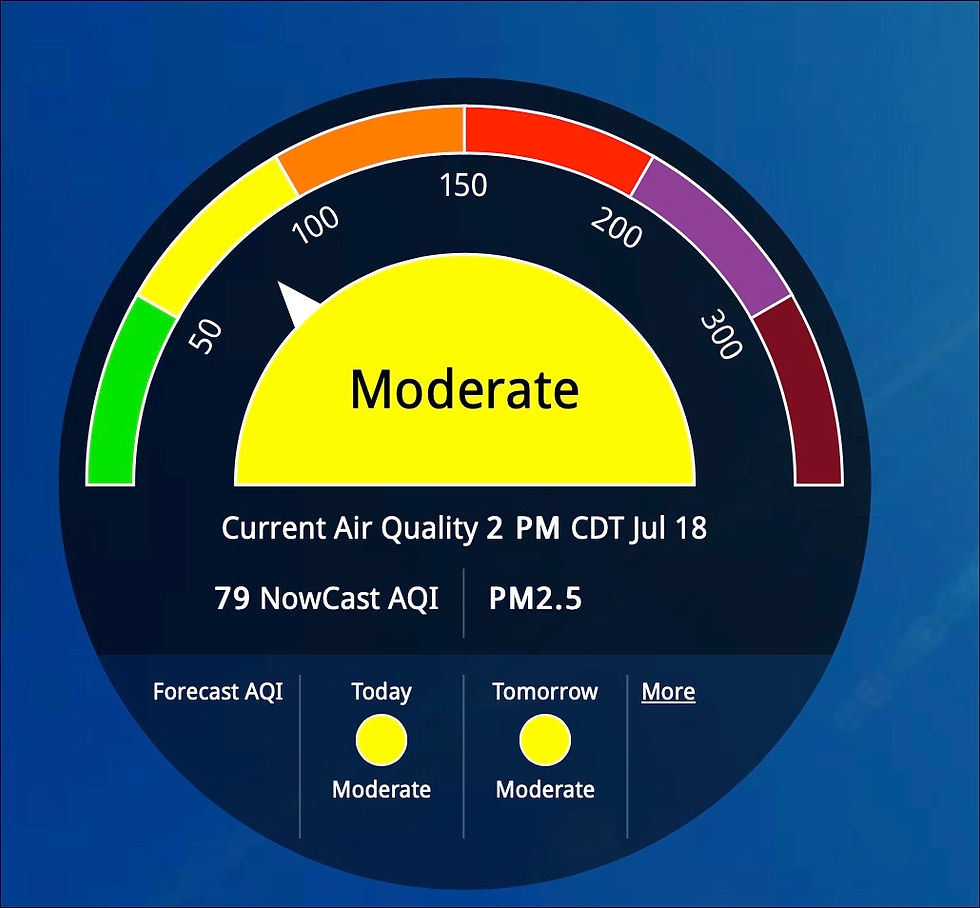DFW air quality planners outline projects to reduce air pollution through 2050, as North Texas records 6 days of unhealthy air.
- WPC Staff

- Jun 16
- 3 min read

Summary: In total, Dallas-Fort Worth saw 43 ozone alerts in 2024. Since 2023, air quality planners with the North Central Texas Council of Governments have been drafting the Dallas-Fort Worth Air Quality Improvement Plan. The Priority Climate Action Plan is a short-term planning guide to improve air quality through 2030; the Comprehensive Climate Action Plan... through 2050.
• Latest Update: 17 June 2025
• #Tags: #AirQuality
DFW air quality planners outline projects to reduce air pollution from transportation through 2050 as NTexas records 6 days of unhealthy air.
By the second week of June, the Dallas-Fort Worth region had seen six days in 2025 where the region’s ozone reached unhealthy levels. In total, Dallas-Fort Worth saw 43 ozone alerts in 2024. North Texans could see more alerts later this year from the Texas Commission on Environmental Quality, the state agency responsible for regulating and enforcing federal air quality standards, as ozone season for the region runs from March to October. [1]
[All this as], North Texas air quality planners are updating the region’s long-term air quality improvement plan to largely focus on reducing transportation emissions. Since 2023, air quality planners with the North Central Texas Council of Governments have been drafting the Dallas-Fort Worth Air Quality Improvement Plan. [And now they are] working to add more measures... to focus on emissions generated through transportation. [2]
The plan is broken up into two parts [2]:
• The Priority Climate Action Plan is a short-term planning guide to improve air quality through 2030.
• The Comprehensive Climate Action Plan projects emissions and targets sources of air pollution to improve air quality through 2050.
[More in articles linked below.]
Willow Park Civics Sources and Resources
[1] North Texas records 6 days of unhealthy air quality levels in peak ozone season, Fort Worth Report, 09 June 2025, Excerpts
By the second week of June, the Dallas-Fort Worth region had seen six days in 2025 where the region’s ozone reached unhealthy levels.
That number is down slightly from the seven Ozone Action Day alerts made between May and June 8, 2024, for North Texas, according to the latest data from the North Central Texas Council of Governments, the agency tasked with monitoring the region’s air quality.
In total, Dallas-Fort Worth saw 43 ozone alerts in 2024.
North Texans could see more alerts later this year from the Texas Commission on Environmental Quality, the state agency responsible for regulating and enforcing federal air quality standards, as ozone season for the region runs from March to October.
Ozone Action Day forecasts are made daily by the state commission so the public, industries and businesses can take preventative measures to reduce pollutants contributing to ozone formation.
[2] DFW air quality planners outline projects to reduce air pollution from transportation through 2050, Fort Worth Report, 06 June 2025, Excerpts
North Texas air quality planners are updating the region’s long-term air quality improvement plan to largely focus on reducing transportation emissions.
Since 2023, air quality planners with the North Central Texas Council of Governments have been drafting the Dallas-Fort Worth Air Quality Improvement Plan. The document outlines measures to improve air quality in North Texas across several sectors, including transportation, energy, water, waste management, agriculture, forestry and open space.
The plan is broken up into two parts:
• The Priority Climate Action Plan is a short-term planning guide to improve air quality through 2030.
• The Comprehensive Climate Action Plan projects emissions and targets sources of air pollution to improve air quality through 2050.
In a June 5 meeting, council of governments air quality planners Savana Nance and Irlenia Hermosillo said the agency is working to add more measures to the Comprehensive Climate Action Plan to focus on emissions generated through transportation.
Comments